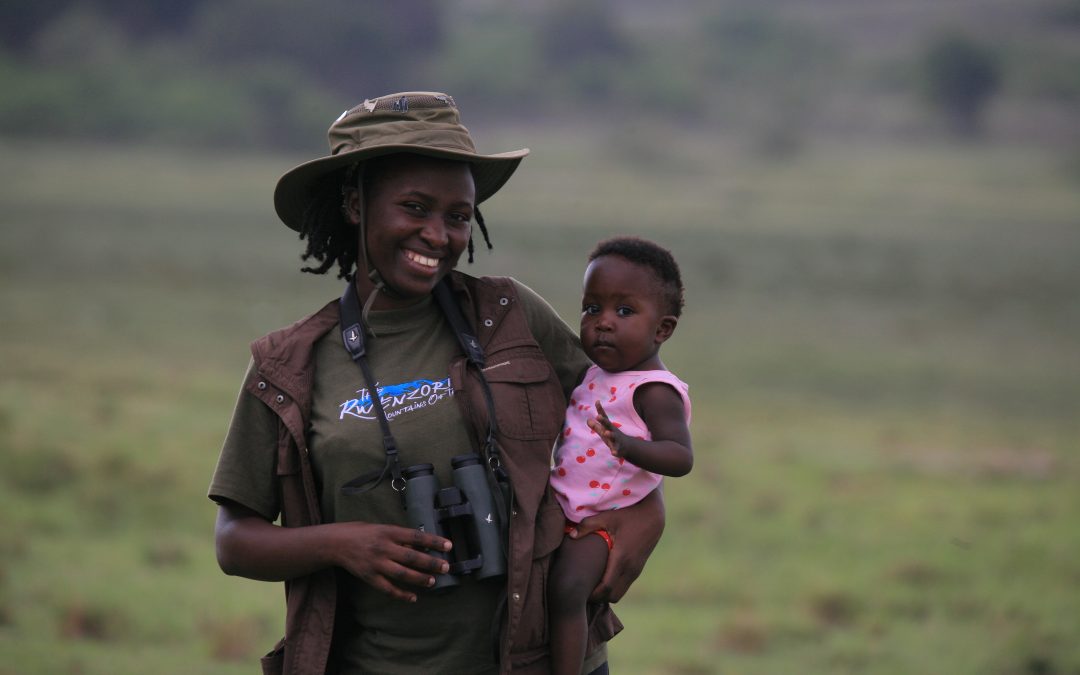About shoebills, turacos, ostriches and other Uganda birds
Our guest today is Judith Mirembe who is currently based in Uganda. Judith is a bird guide and researcher with a passion for birds, keen on their conservation as well as protection of their habitats. This passion stems back from when she was a kid where she learnt birds in her local language and appreciated the cultural stories attached to them.
She is the Chairperson of the Uganda Women Birders’ Club, that started in 2013 as an initiative to introduce women to birdwatching, a profession that is dominated by men in Africa. This passion led her into starting a non-profit organization, Shoebill-Watch Uganda whose major aim is to protect the Shoebill and other bird species in Uganda. She holds a Masters Degree in Environment and Natural Resources and has done a number of courses by the Tropical Biology Association (TBA) on application of Citizen Science in research and conservation of species. She has in the past (2016-2019) worked with Nature Uganda, a Birdlife International Partner in Uganda as the research and monitoring coordinator where her major role was to coordinate bird population monitoring in Uganda. Judith is a Zoological Society of London (ZSL) EDGE (Evolutionally Distinct and Globally Endangered ) of Existence Fellowship Alumni (2017-2019) where she together with the local communities on the shores of Lake Victoria carried out research on the Shoebill, a globally threatened bird species. She has continued this amazing and ground breaking working with the local communities at Mabamba wetland where she has trained the local guides to use a mobile phone tool to monitor the Shoebill and the threats it is faced with as they go about their routine of guiding tourists. She is the editor for the Birdwatch, a newsletter talking about Uganda’s birdwatching sector (Birdwatch_Newsletter.pdf
Read about women guides in the Christian Science Monitor here.
Read an interview with Judith at a website here.
Questions:
1. For people who have not visited Uganda, can you tell us some of the species of birds that we can see there?
2. What are some of your favorite species and why?
3. Please talk about the different habitats that are found in Uganda.
4. Please tell us what is special about the shoebill and why you started the conservation program for this bird?
5. Tell us some of the cultural symbolism associated with birds? For example, do people believe that certain birds bring them good luck or bad luck?
6. What are some of the spectacular raptors that you see in Uganda? What about ground dwelling birds such as ostriches which we don’t see in India.
7. The national bird of Uganda is the gray crowned crane. Is there any folk belief or any stories associated with this bird? Why did Uganda choose this as the national bird?
8. You have some incredibly beautiful birds in Uganda. Can you describe a few of your favorites. Maybe the turaco?
9. India’s national bird is a great Indian bustard. You also have bustards in Uganda. Can you talk about that?
10. You also have hornbills– some pretty impressive ones.
11. What made you start Uganda Women Birders?
12. Lastly, please tell us about conservation efforts that are happening in Africa and specifically in Uganda.



One thing i can agree 100%, she is a real birder, I know her personally.
And for me, my favorite bird is the Shoebill stork.
Tha KS guys for loving Uganda
What makes shoebill different from dutch clog
For anyone looking forward to a birding safari, this is a well written piece of information they will need. Thank you for sharing.
The shoebill is amazing. Thanks for the photos
Comment perfect article thanks a lot.